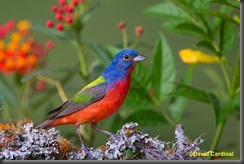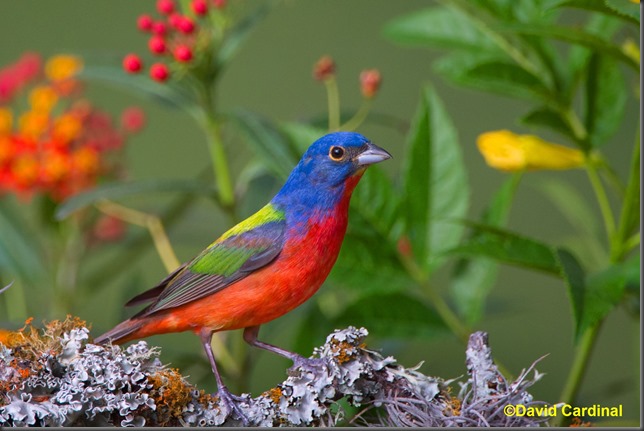- Photo Safaris
- Alaska Bears & Puffins World's best Alaskan Coastal Brown Bear photo experience. Small group size, idyllic location, deluxe lodging, and Puffins!
- Participant Guestbook & Testimonials Candid Feedback from our participants over the years from our photo safaris, tours and workshops. We don't think there is any better way to evaluate a possible trip or workshop than to find out what others thought.
- Custom Photo Tours, Safaris and Personal Instruction Over the years we've found that many of our clients & friends want to participate in one of our trips but the dates we've scheduled just don't work for them or they'd like a customized trip for their family or friends.
- Myanmar (Burma) Photo Tour Myanmar (Burma) Photo Tour December 2017 -- with Angkor Wat option
- Reviews Go hands-on
- Camera Reviews Hands-on with our favorite cameras
- Lens reviews Lenses tested
- Photo Accessories Reviews Reviews of useful Photo and Camera Accessories of interest to our readers
- Useful Tools & Gadgets Handy tools and gadgets we've found useful or essential in our work and want to share with you.
- What's In My Camera Bag The gear David Cardinal shoots with in the field and recommends, including bags and tools, and why
- Articles About photography
- Getting Started Some photography basics
- Travel photography lesson 1: Learning your camera Top skills you should learn before heading off on a trip
- Choosing a Colorspace Picking the right colorspace is essential for a proper workflow. We walk you through your options.
- Understanding Dynamic Range Understanding Dynamic Range
- Landscape Photography Tips from Yosemite Landscape Photography, It's All About Contrast
- Introduction to Shooting Raw Introduction to Raw Files and Raw Conversion by Dave Ryan
- Using Curves by Mike Russell Using Curves
- Copyright Registration Made Easy Copyright Registration Made Easy
- Guide to Image Resizing A Photographers' Guide to Image Resizing
- CCD Cleaning by Moose Peterson CCD Cleaning by Moose Peterson
- Profiling Your Printer Profiling Your Printer
- White Balance by Moose Peterson White Balance -- Are You RGB Savvy by Moose Peterson
- Photo Tips and Techniques Quick tips and pro tricks and techniques to rapidly improve your photography
- News Photo industry and related news and reviews from around the Internet, including from dpreview and CNET
- Getting Started Some photography basics
- Resources On the web
- My Camera Bag--What I Shoot With and Why The photo gear, travel equipment, clothing, bags and accessories that I shoot with and use and why.
- Datacolor Experts Blog Color gurus, including our own David Cardinal
- Amazon Affiliate Purchases made through this link help support our site and cost you absolutely nothing. Give it a try!
- Forums User to user
- Think Tank Photo Bags Intelligently designed photo bags that I love & rely on!
- Rent Lenses & Cameras Borrowlenses does a great job of providing timely services at a great price.
- Travel Insurance With the high cost of trips and possibility of medical issues abroad trip insurance is a must for peace of mind for overseas trips in particular.
- Moose Peterson's Site There isn't much that Moose doesn't know about nature and wildlife photography. You can't learn from anyone better.
- Journeys Unforgettable Africa Journeys Unforgettable -- Awesome African safari organizers. Let them know we sent you!
- Agoda International discounted hotel booking through Agoda
- Cardinal Photo Products on Zazzle A fun selection of great gift products made from a few of our favorite images.
- David Tobie's Gallery Innovative & creative art from the guy who knows more about color than nearly anyone else
- Galleries Our favorite images
Wildlife Photos: Subject + Light + Background–Painted Bunting
Wildlife Photos: Subject + Light + Background–Painted Bunting
Submitted by David Cardinal on Fri, 05/09/2014 - 08:37
 When most people think of wildlife photos – whether of Mammals, Birds, or Reptiles – they think of the subject. But there is a lot more to making a compelling photograph of an animal in nature than the subject. Light plays an essential role, for starters. Dull, drab, images are seldom capable of commanding our attention. Backgrounds, while under-rated, are also key. All three came together in this image of a Painted Bunting from our Hill Country bird photo workshop this week. Each element plays a role…
When most people think of wildlife photos – whether of Mammals, Birds, or Reptiles – they think of the subject. But there is a lot more to making a compelling photograph of an animal in nature than the subject. Light plays an essential role, for starters. Dull, drab, images are seldom capable of commanding our attention. Backgrounds, while under-rated, are also key. All three came together in this image of a Painted Bunting from our Hill Country bird photo workshop this week. Each element plays a role…
Painted Bunting: The Subject
One of the big draws of our Texas photo workshops is the amazing birdlife, and especially the variety of colorful birds. None is more spectacular than the Painted Bunting – perhaps the prettiest bird in the US, depending on who you ask and how you judge. So any photograph of a Painted Bunting is likely to be cherished. However, getting a breeding male in the spring, in clean condition, perched nicely and looking in our general direction, is a real treat. I’ve photographed plenty of Painted Buntings, but this one was one of the nicest looking, and best perched.

Painted Bunting, Cardinal Photo Texas Hill Country Photo Workshop
Nikon D4S, Nikon 200-400mm AF-S Lens + TC 1.4, f/5 @ 1/1500s, ISO 1100, –1/3 e.v.
Golden Light
Great light makes a tremendous difference. Light is softest near dawn and dusk, and yesterday when I photographed this bird was no exception. Even light really helped light the bird, bring out the colors, and allow me to use a reasonable ISO – all without stressing the camera’s ability to capture the dynamic range in the image.
The Nikon D4S seems to meter a little “hot” so I did find myself dialing in some minus exposure compensation quite a bit this trip to keep highlights from blowing out in various images. –1/3 stop was all it took for this image.
Well-placed Color: The Background
Even more under-estimated than light are backgrounds. Depending on whether you are looking for a true environmental or a portrait they can be either blurry or sharp, but they should almost always contrast with the subject, and allow space for the subject to steal the show. In this case, the green background immediately surrounding the Painted Bunting allows the bird to rule the image, but the colorful flowers and lichen covered perch further out provide additional points of interest in the image.
Awesome blinds & setups like these are typical of the great photography we get when visiting Block Creek, one of our favorite songbird hotspots, hosted by Sharron & Larry Jay. Those interested in tweaking the image further could add a soft vignette to the edges, adding to the focus on the Bunting, but risk the photo turning from a capture of a moment in nature to a man-made piece of art.
If you’re interested in getting some spectacular bird images like this one, please consider joining us for either our South Texas Bird Photo Workshop or our Texas Hill Country Bird Photo Workshop in 2015!

